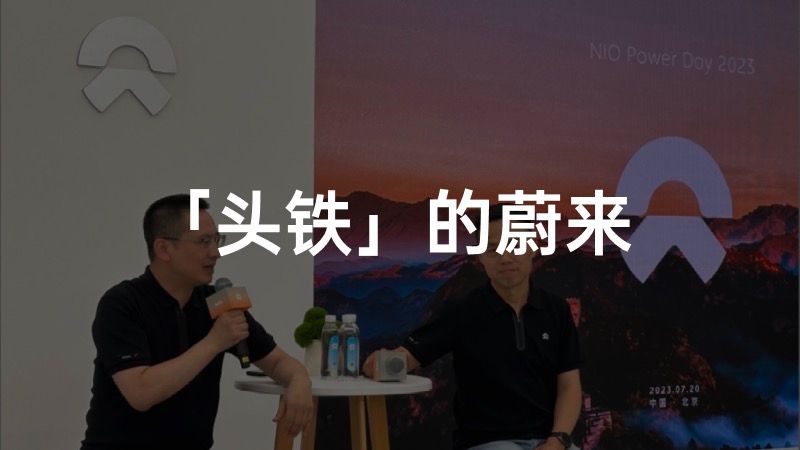Starting from Xi’an to the Horgos border port, the Silk Road spans 3,133 kilometers. Now, NIO car owners can accomplish the entire journey relying on the 33 charging and battery replacement stations along the way, thus turning the Silk Road into the 60th route of the NIO Power Journeys energy layout project.
On July 20th, this route appeared in the opening video of the NIO Power Day 2023 event and became a representative of NIO’s energy layout system.

It is worth mentioning that this event is the third NIO Power Day held by NIO since 2021, and a large-scale centralized display after the fifth anniversary of the establishment of NIO Power–not just this, during the communication session, NIO also specifically shared the system support, product updates, and future plans of NIO Power.
Among them, NIO once again emphasized the value of the battery replacement model.
I. The latest report card of NIO Power
If we look at NIO from the perspective of the energy supplement system, there are two sentences that are key points: NIO is the car brand with the most battery replacement stations in China, and it is also the car brand with the most charging pile layouts in China.
Battery replacement stations + charging piles constitute the two key pillars of the NIO Power system.
At NIO Power Day 2023, NIO announced a series of achievements of its energy supplement system. The most eye-catching is a summary of results. It showed that as of 12 noon on July 20:
- NIO has accumulated 25,334,943 battery replacements;
- A total of 1,564 battery replacement stations have been built, of which 429 are highway battery replacement stations;
- There are 1,509 supercharging stations with a total of 7,394 pile;
- There are 1,306 destination charging stations, with a total of 9,351 piles;
- Access to third-party charging piles 758,402.

Under this total score, NIO’s performance in various energy supplement operation scenarios is also noteworthy.
Power Journeys, connect 60 routes
As a project that allows NIO users to enjoy reaching their ‘destination’, after the Silk Road project is connected, the Power Journeys project has completed a total of 60 route connections nationwide.
 Within this year, Power Journeys will also open up routes such as the Gannan line, the East China Line, Qiandongnan, and the Xilin Gol grassland line, and plans to start overseas deployment, crossing five countries in Europe, Germany, Norway, Denmark, Sweden, and the Netherlands.
Within this year, Power Journeys will also open up routes such as the Gannan line, the East China Line, Qiandongnan, and the Xilin Gol grassland line, and plans to start overseas deployment, crossing five countries in Europe, Germany, Norway, Denmark, Sweden, and the Netherlands.
Charging Poles, Serving More Than Just the NIO Brand
NIO has currently installed 16,745 public charging poles, making it the automotive brand with the most charging pole deployment in China.
Among them, under high-speed scenarios, NIO has deployed 150 high-speed supercharging stations, with 459 high-speed charging poles, making it also the automotive brand with the most charging pole deployment on high-speed highways in China.
Among the car brands served by NIO’s public charging poles, 20.3% are NIO, 19.2% are BYD, 13.1% are Tesla, and others include Geely, ROEWE, Xpeng, LI, CCAG and other car brands.

From here, it can also be seen the value NIO has created for the overall industry in terms of energy replenishment.
In addition, according to NIO’s president Qin Lihong, NIO’s ongoing 500 kW ultra-fast charging pole plan, in a real-world scenario, can offer 600A maximum current and 1,000V maximum voltage.
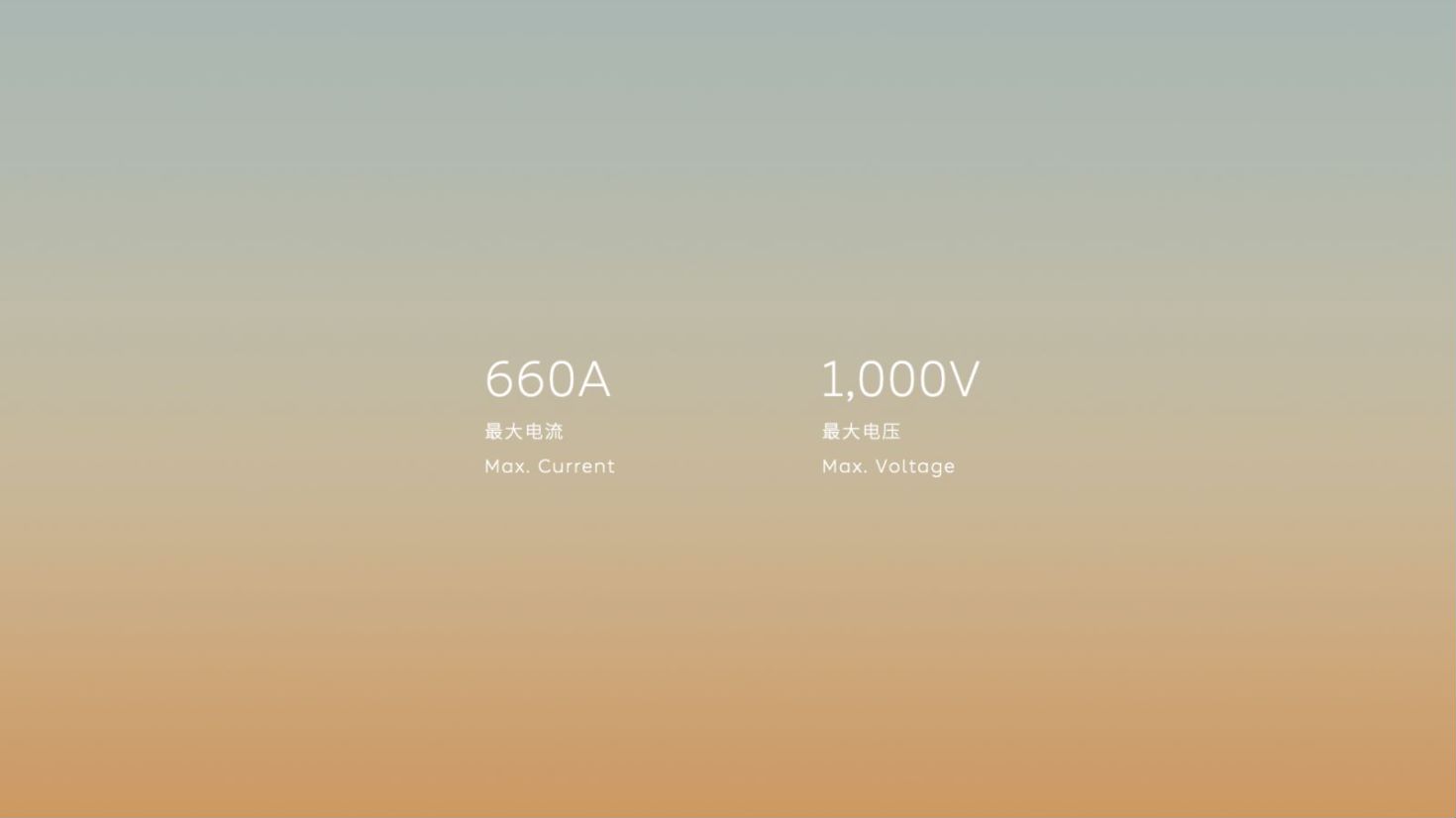
It’s worth mentioning that up until now, NIO has installed home charging stations for 197,596 users, a figure close to 200,000. Also, NIO offers the most complete array of home charging products in the industry, including 7 kW, 11 kW, and 20 kW.
Adding 1000 Battery-Swap Stations by End of the Year, Staying Steady
Battery swapping is the core business sector of NIO Power’s overall energy replenishment system. The deployment of 1,564 battery-swap stations has given NIO an impressive achievement.
For instance, on average every 1.6 seconds, a car departs fully charged from a swapping station. Also, battery swapping has become the most popular fueling method for NIO users. The amount of electricity obtained by NIO users through battery swapping in June this year reached 58.1%, which is 16.2% higher than the proportion of electricity obtained by charging.
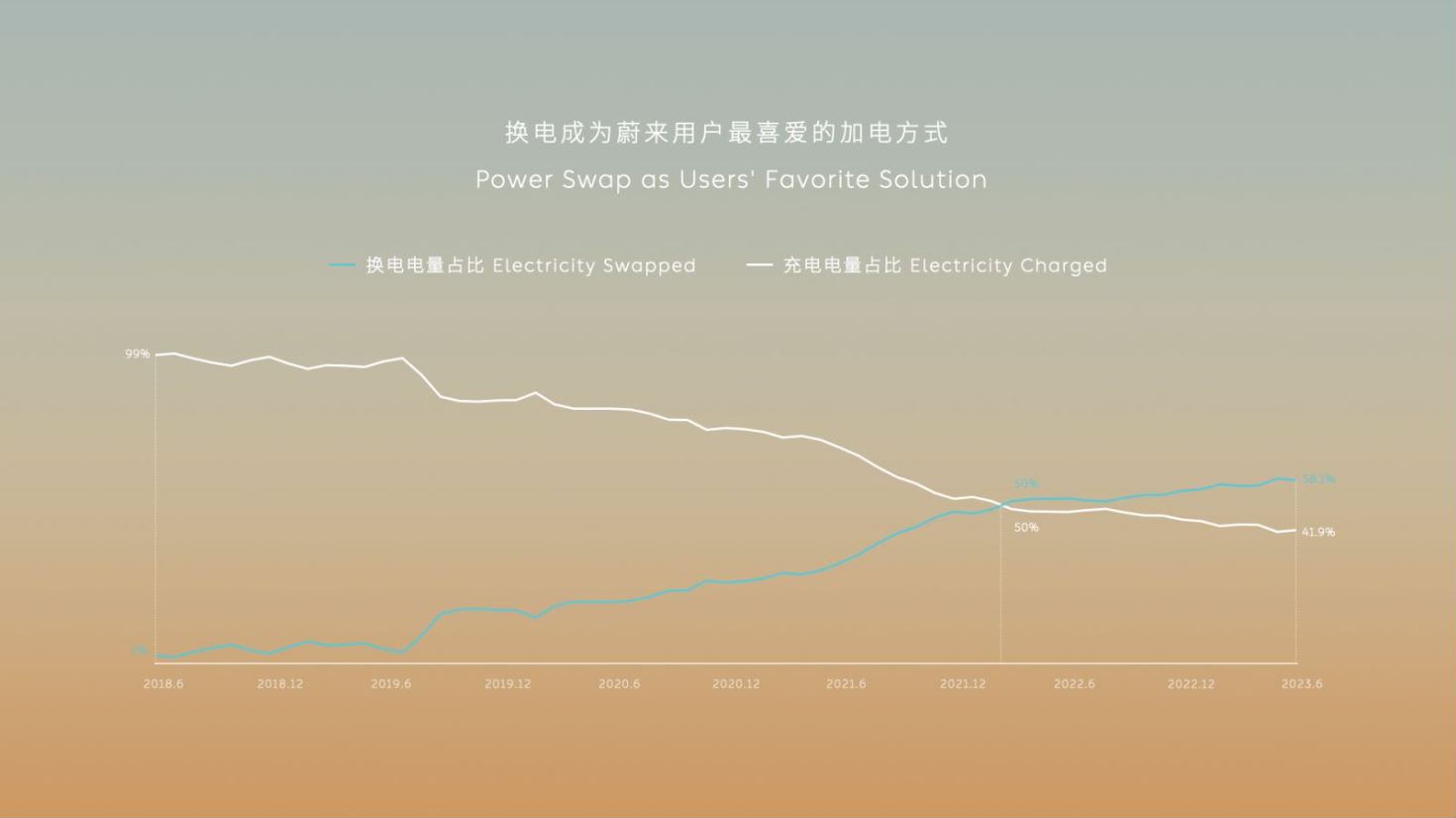
According to the definition of the electric district (having a battery-swap station within three kilometers) by the NIO community, NIO has achieved a 73% coverage rate in national electric districts. Among them, Shenzhen and Shanghai, two first-tier cities, have electric district coverage rates of over 90%. And Haikou, Xiamen, Nanjing, Wuxi, Chengdu, Hefei, Suzhou, Taiyuan and other cities have electric district coverage rates of over 80%.In the high-speed scenarios, NIO has constructed a high-speed battery-swap network covering six north-south and four east-west city clusters, taking five years. Naturally, with the ongoing deployment of the battery-swap network, NIO plans to complete a layout of the high-speed battery-swap network for 9 north-south and 9 east-west, totalling 19 city clusters in 2025.

With such a layout, NIO’s slogan in its battery-swap business is: “Swap batteries with NIO, convenience everywhere”.
Notably, about the goal of 1000 battery-swap stations this year, Li Hong Qin stated that due to the capacity ramp-up issue of the third-generation stations, the pace was slightly slower in the first half of the year; but the layout of NIO’s battery-swap stations will accelerate in the second half of the year, “like dropping dumplings”, and is certain to complete the goal of 1000 battery-swap stations by the end of the year, maybe even earlier.
II. The Present and Future of Battery Swap Services
Regardless of the energy supplement system built by NIO Power, or NIO’s brand itself, battery swapping is a key label – hence, at this NIO Power Day, NIO’s battery-swap business was still the focus of many discussions.
Daily Rental for Battery Upgrades, Plus a 150-degree Battery
Among them, at this event, NIO launched the “Flexible Battery Upgrade Daily Rental Service”. This flexible battery upgrade service supports returning at a different location and can be taken anywhere nationwide, further reducing long-distance travel costs.
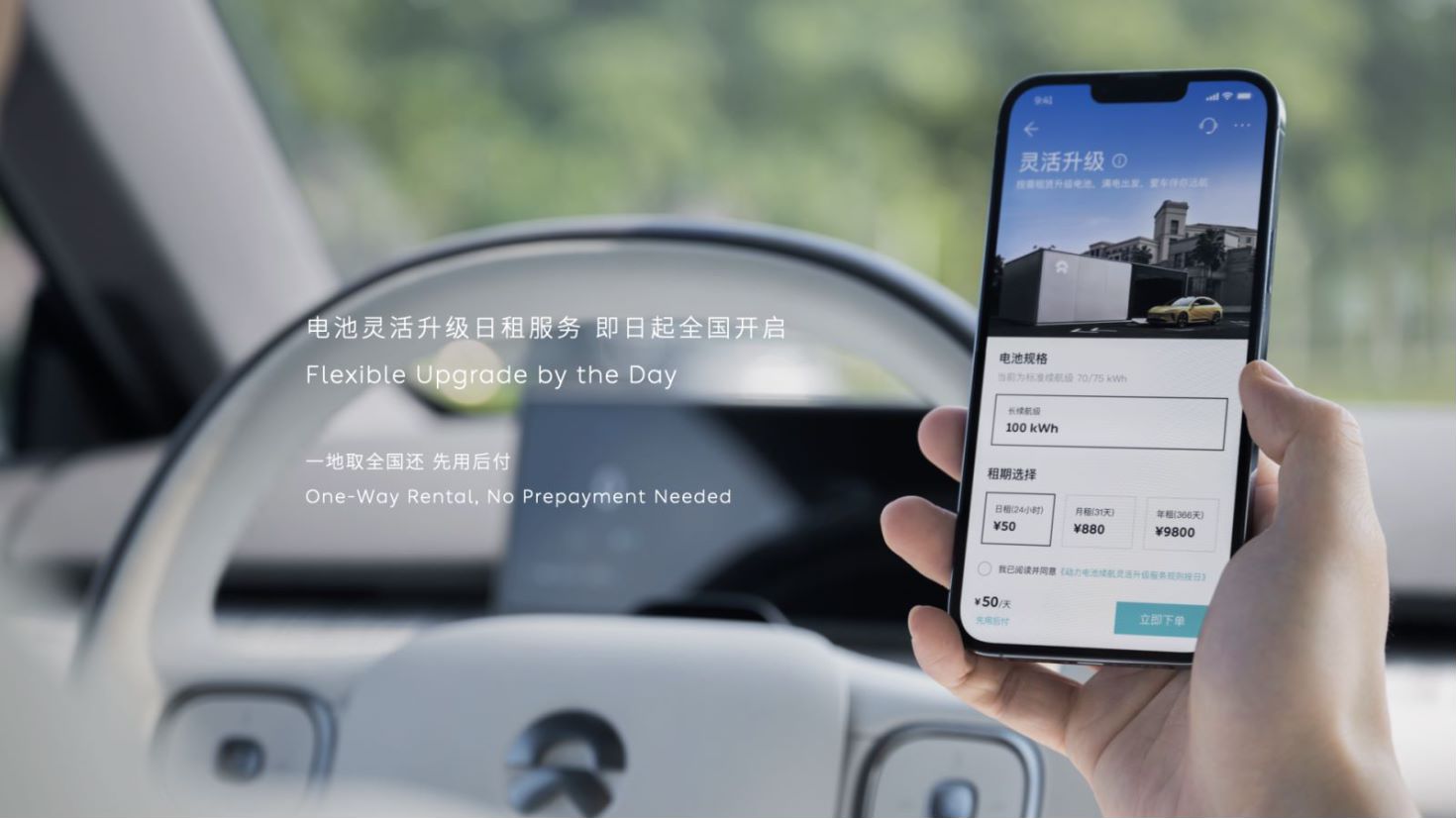
In terms of price, the base price for upgrading the standard endurance battery pack to a long endurance battery pack is 50 yuan per day (totaling 26 hours, including one hour each for taking and returning the battery), with a maximum cap at 880 yuan in 31 days.
About this service, NIO stated that it was initially intended for the 150-degree battery’s debut, however due to a delay with the 150-degree battery, it was launched earlier.
Interestingly, for the 150-degree battery pack, NIO also revealed some information: The 150-degree battery pack took longer for research, development, and testing than expected, and it was supposed to be released in July, but it has been delayed. Nevertheless, NIO has already prepared for its operation.
Furthermore, the 150-degree battery won’t be particularly cheap or expensive, but the daily rental service will make user experience much friendlier.
At the press conference, NIO told us that the “Flexible Battery Upgrade Daily Rental Service” has dramatically increased operational difficulties for NIO, and the difficulty has increased geometrically.
For example, it requires preparation for the software, stock, logistics, and other operational systems, and to tackle the issue of imbalances in stages and regions. NIO admitted that some aspects are not yet ready and are learning from the ongoing iterative process.
Unveiling the Future Direction of Next-gen Battery Swap Stations
In addition to the “Flexible Battery Upgrade Daily Rental Service”, NIO’s battery swap system has also upgraded its services from multiple perspectives. For example, on the existing basis, the speed of auto-parking during battery swapping will increase, and the ‘One-press Parking’ feature is expected to be launched in the third quarter of 2023. Meanwhile, the swapping speed of the second-gen battery swap stations will significantly improve.
Worth mentioning is, at this event, NIO also released the ‘Uninterrupted Power during Swapping’ feature, highly demanded by users, which will be launched in the fourth quarter. With this feature, users can continue to enjoy multimedia entertainment, ventilation, and other experiences during the battery swapping process, but air conditioning will not be supported.
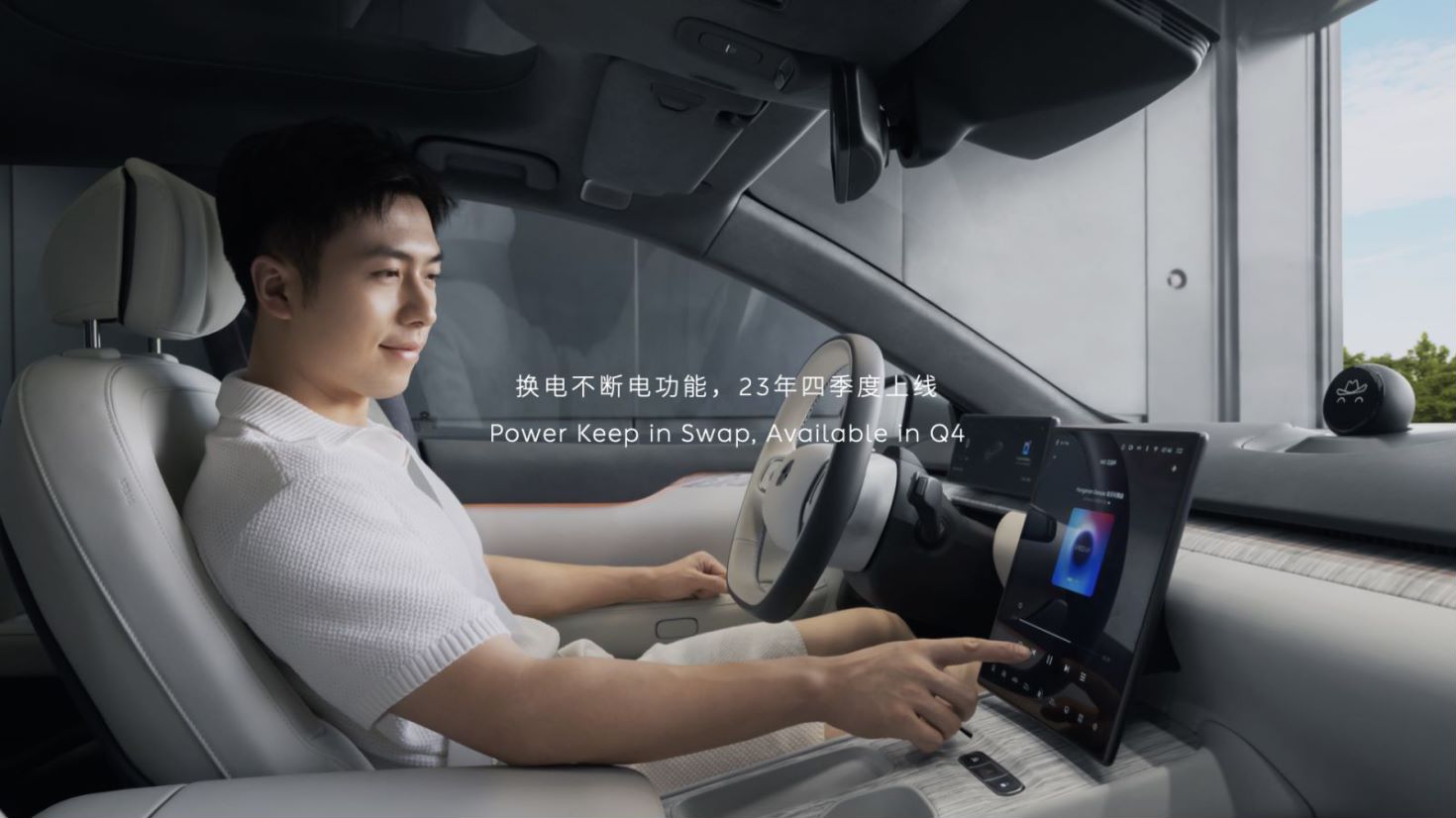
So, what is the future R&D direction for battery swapping stations?
Shen Fei, senior vice president of NIO, stated that there is currently no term for a “fourth-gen swap station” internally, but they will address some issues in the current battery swapping experience, such as speed and smoothness. He emphasized that intelligence is the clear direction for next-gen battery swap stations, mainly hoping to improve user experience through intelligence.
Shen Fei also stated that grid interactivity and whether other companies will join the battery swap system, including product cooperation between different companies and brands, were also considered in the future R&D direction of battery swapping stations.
III. The Other Side of NIO Power
At this NIO Power Day, NIO once again showcased its internal support system for the entire energy replenishment experience, calling it the “Globally Leading Digitized Energy Service”.
This is the other side of NIO Power.
In terms of philosophy, the core of this system is about cloud-computing, data usage, and intelligence, which is essentially based on cloud computing, big data, and artificial intelligence. Under the support of these technologies, the system aims to achieve six objectives: connecting users, connecting organizations, connecting resources, continuously improving user experience, continuously improving operational efficiency, and sustainable development.

For example, in terms of charging and swapping station site selection, NIO has built the Athena Intelligent Site Selection System – an AI-assisted decision-making system based on spacial big data for site selection – with which the efficiency of the construction of user wish-lists can be effectively improved.

To enhance the user’s charging experience, NIO has developed a contextualized intelligent charging recommendation system that combines route navigation with charging planning, offering comprehensive recommendations for users by integrating spatial, temporal, and charging methods.Additionally, NIO has developed 3D route guidance to help users locate power stations. The 3D real-time battery swap feature improves user experience and efficiency.
Moreover, to better connect people, cars, stations, and energy, and enhance operational efficiency, NIO has developed a ‘Smart Dispatch’ feature. It can exhibit real-time battery adjustment ratio, order quantity, battery information, and battery swap queue information, and can help assign operation and maintenance staff optimally.

Of course, on the other side of NIO Power, the most significant social value is its participation in ‘Virtual Power Plants’ in power grid scheduling.
In fact, being the only domestic automobile company running battery swap stations on a large scale,** NIO is also the first car brand to be integrated into power grid scheduling virtual power plants ** — in response to this, Shen Fei stated, “Electric Cars help build a new type of power system.”
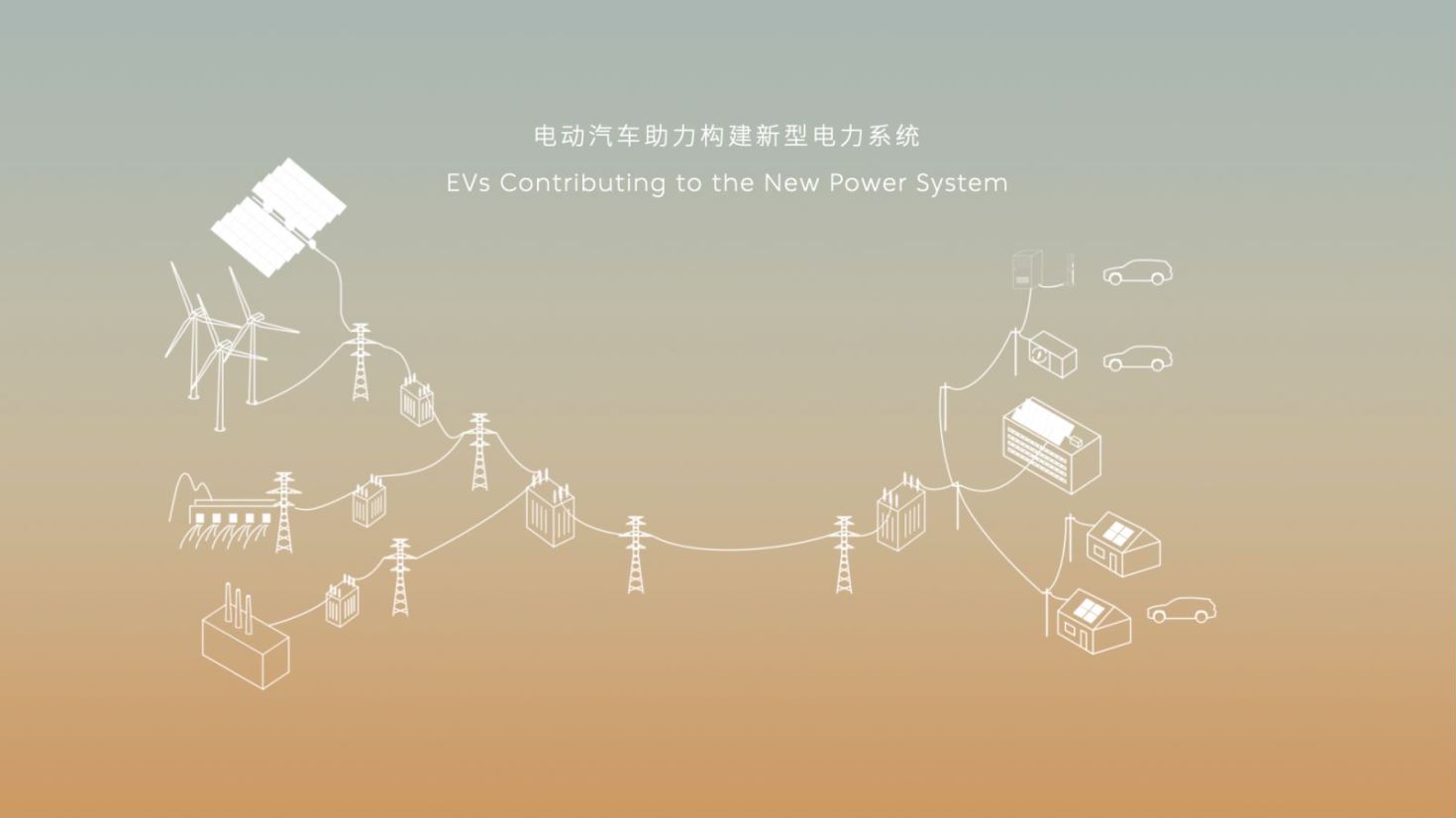
Let’s look at NIO’s report card:
- NIO already has 1,012 battery swapping stations participating in off-peak recharging, and the power used for peak shaving and load leveling exceeds 54,550,000 kWh.
- NIO has a total of 483 stations and 25,000 home charging piles participating in demand response and peak shaving.
On the spot, NIO released a 20 kW V2G charging pile, which not only has fast charging capabilities but also discharging features. It allows electric vehicles to absorb energy when grid load is low, and release energy when grid load is high, fostering better interaction with the grid and aiding in grid peak shifting and frequency regulation.
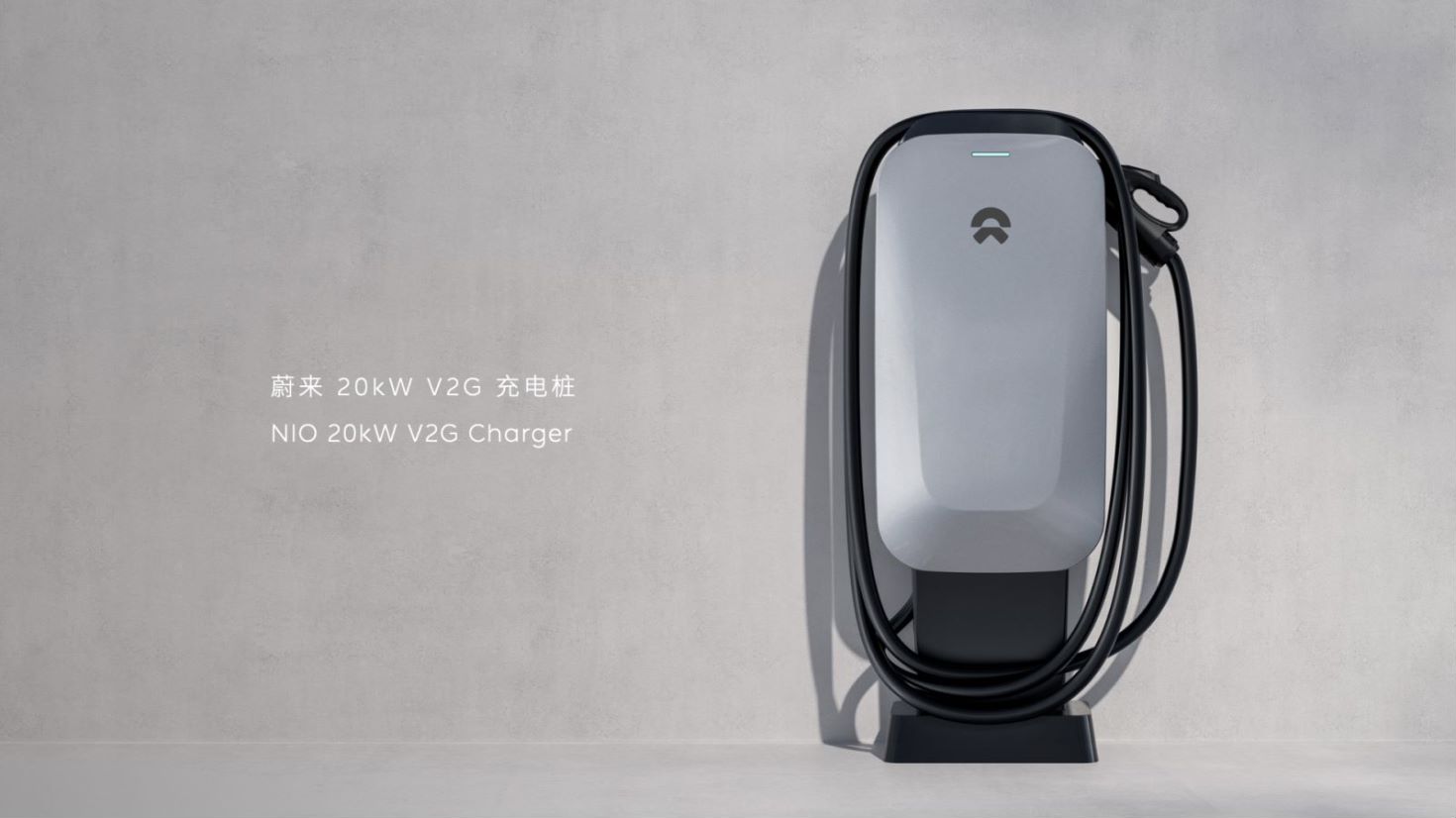
Worth mentioning is that NIO announced a collaboration with Qilian Mountain National Park to build the world’s first V2G solar power supply system, set to go live in August.
Four, Reassessing The Value of NIO Power
At the NIO Power Day event, the cost, revenue, and value of NIO’s continuous investment in battery swapping stations and supercharging piles became a recurrently asked question. In this, undoubtedly, the value of the battery swap stations is a major focus.
Interestingly, to highlight the benefits of battery swapping, NIO has summarized nine points, including, but not limited to:
- Battery swapping is as fast as refueling, accomplished in three minutes.
- It eliminates range anxiety, making travel convenient.
- You don’t have to get out of the car, the entire process is automatic, and more comfortable than charging.* Flexibility in upgrading, small batteries for city use and large batteries for long distance.
- Separation of car and battery, lowering the threshold for car purchases by not needing to buy the battery.
- Each battery exchange is a checkup, ensuring safer batteries.
- Optimization of charging current extends battery life compared to super fast charging.
- Batteries can be easily disassembled for recycling and reusing.
- Interaction between the car and the internet helps to reduce energy waste.

Herein, six factors are targeting at economic efficiency and convenience for the users, falling within the category of user value; while three points are oriented towards the B-to-B aspect, reflecting social value.
And yet, as Lihong Qin admits, “Nothing is perfect,” establishing power-swap stations incurs high initial cost. Moreover, the power-swap model puts certain requirements on battery-standard, posing drawbacks on NIO’s car model development. Besides, unifying the model’s standard cross-brands is rather challenging.
So, how to factor in the whole NIO Power?
As for this, Fei Shen commented that what NIO considers is to create value. “Some values can be measured in monetary terms in the present, while others can only be assessed over a long time, like raising a child,” he said. If only count the income from charging services, NIO is definitely at a loss at present, but NIO Power can reassure all users countrywide to buy electric vehicles, the value of which cannot be estimated.
To this end, Lihong Qin added, NIO Power currently also has an advertising effect. Simply put, a few charging piles should be set up near NIO power-swap stations. Other brands’ owners, while charging their cars, often watch NIO owners complete battery swapping and leave quickly, so the likelihood of these owners switching to NIO next time increases.
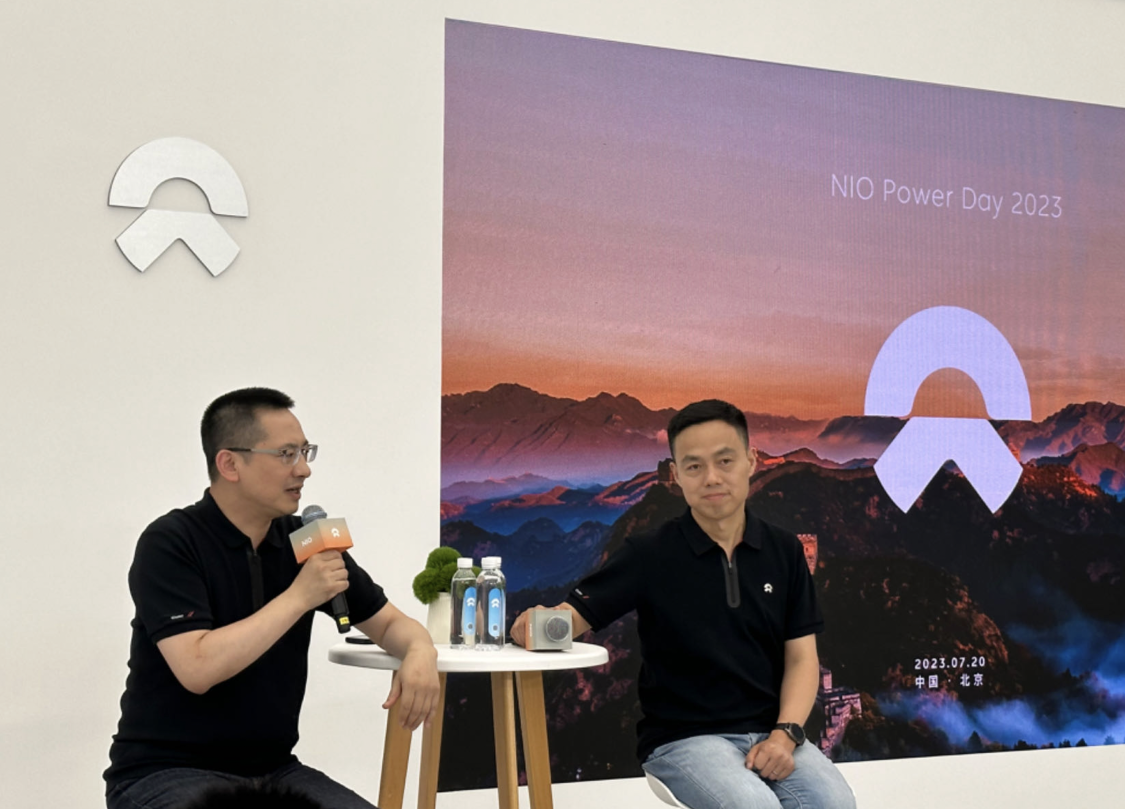
As Qin emphasized, from a financial point of view, NIO internally has a “simulation account book.” If one removes NIO’s investment in technology updates such as V2G, NIO Power itself is profitable based on everyday operation, and it is just distributing the expenses in a better way to NIO’s marketing costs.
Thus, Qin pointed out, “We folks are obstinate but patient,” regardless of the financial statements, “we will continue to invest steadfastly.”
It is worth mentioning that as NIO keeps on expanding NIO Power, it has received some positive feedback.
Fei Shen noted during a talk that the battery swap model was very complicated at the start, involving site selection, power capacity and ongoing negotiations with local government departments. But fortunately, the industry’s acceptance of the battery swap model is continuously increasing, national policies have rolled out supportive measures, and NIO has gained more partners, alleviating overall difficulties.
Qin Lihong stated:
In fact, we are blazing a trail in many aspects. We look forward to future success in power swap stations and a clearer set of standards from the country. We hope that our experience, including the pitfalls we encountered, can make it easier for later brands facing the same issues.
V. Conclusion
NIO Power has become one of the most important value supports in the NIO ecosystem today.
From this NIO Power Day event, NIO continues to put significant effort into enhancing the refueling experience that users can directly perceive. The services such as “flexible battery upgrade daily rental”, faster generation two stations, non-stop power swap, and easy parking all significantly benefit NIO owners.
This aligns with Li Bin’s (Founder of NIO) long-emphasized goal: to make recharging more convenient than refueling.

In addition to consumer value, NIO’s layout in NIO Power, especially in power swap stations, has shown societal value from the perspective of power grid interaction after reaching a certain scale. Moreover, it has begun to gain recognition and support from the industry and policy level.
This can be seen as a rare positive return from NIO’s long-term commitment to NIO Power.
Indeed, as Shen Fei mentioned in the conversation, if NIO Power wants to provide a better user service experience, the priority is to expand the scale of power swap stations and charging piles- both of which can enhance NIO Power’s role in power grid interaction and continuously tap its societal value.
However, looking back at the entire NIO ecosystem, the scale of NIO Power, especially the power swap system, is built upon the scale of NIO’s car sales.
Therefore, NIO, while continuing to invest in NIO Power, needs to put more effort into expanding the scale of car sales.
Only in this way can it use NIO Power as a value support, through the amplification of car sales scale, to effectively spread the earlier costs. Thus, achieving overall profitability and establishing a systematic business positive cycle—this obviously takes time. But time stands still for no one. Given the increasingly fierce market competition, NIO needs to speed up.
This article is a translation by ChatGPT of a Chinese report from 42HOW. If you have any questions about it, please email bd@42how.com.
